Family Chelydridae - Snapping Turtles
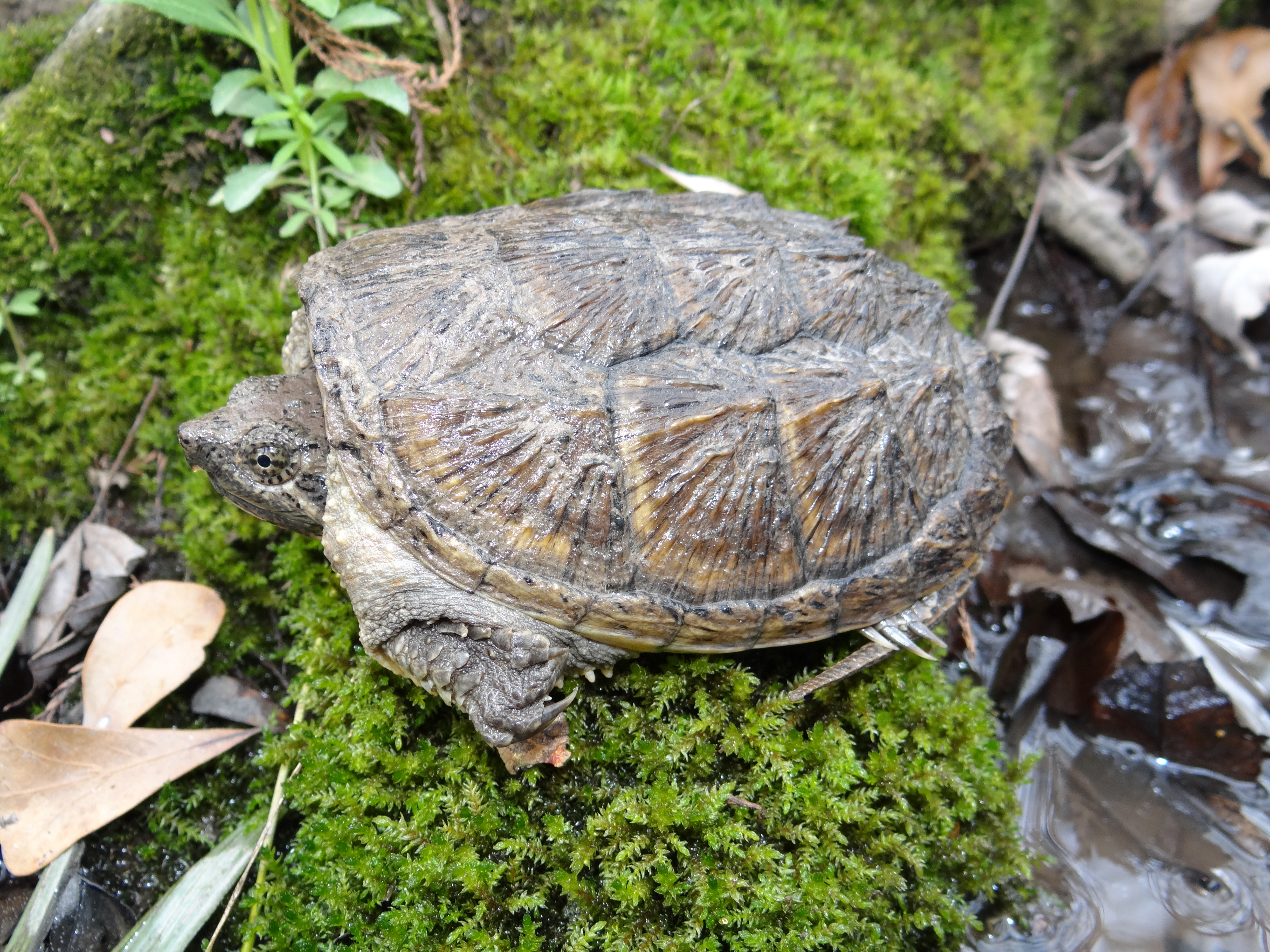
|
Snapping Turtle - Chelydra serpentina
A large aquatic turtle with a dark carapace (shell) and a long tail. Hatchlings have ridges on shell and are often mistaken for the Alligator
snapping turtle. Adults have smooth shells. The plastron (underside of shell) is cross shaped and small, smaller than any other turtle at the
park. Their long neck allows them to occasionally breathe while they lie on the bottom of a shallow body of water. Maximum length is 19 2/5 inches,
494mm. Primary prey consists of sponges, worms, mollusks, insects, crustaceans, fishes, amphibians, reptiles, birds, and mammals. They also eat a
large amount of aquatic vegetation. Population undetermined but probable in park. |
Family Emydidae - Land and Freshwater Turtles
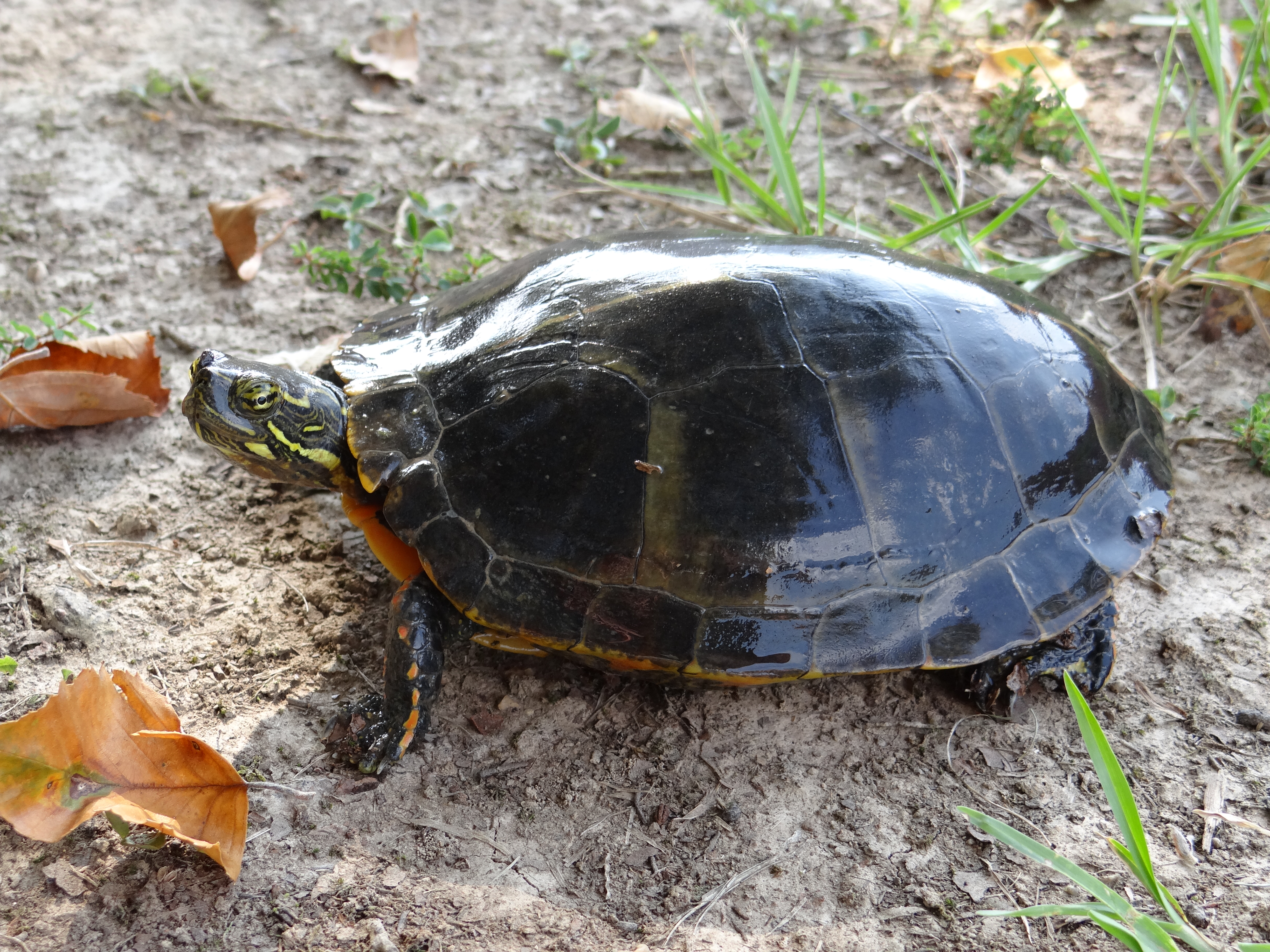
|
Southern Painted Turtle - Chrysemys picta dorsalis
An aquatic turtle with an olive brown to black carapace (shell) and a red, yellow, or orange stripe down its back. Has webbed toes, claws on
each toe, and the plastron (underside of shell) is solid yellow. Maximum length is 6 1/8 inches, 156mm. This turtle likes slow moving waters and
lakes. This is the most abundant species in the United States but the Red-eared Slider is the most abundant species in Louisiana. Often seen
basking on logs. Population undetermined but probable in park. |
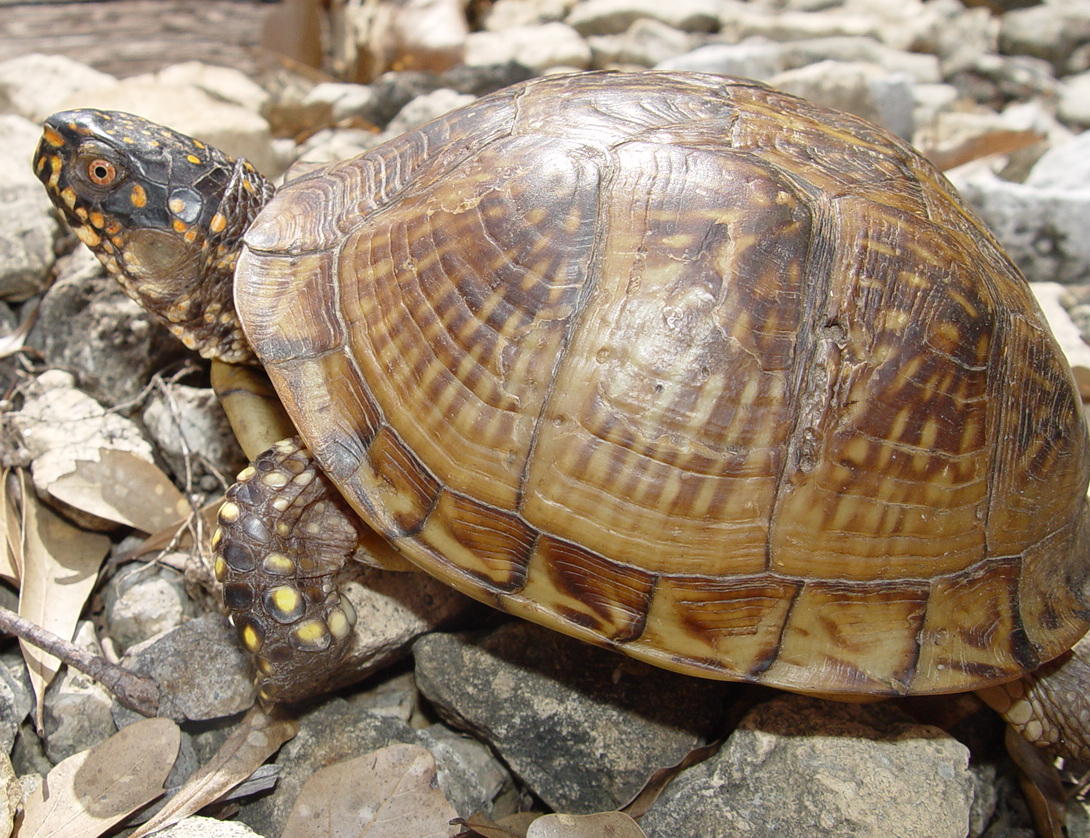
|
Eastern Box Turtle - Terrapene carolina
A terrestrial turtle with a brown, high doomed carapace (shell). Sometimes with yellow or orange markings on carapace (like a starburst) and
sometimes with no markings at all. Has slightly webbed toes with three or four toes on hind feet. Maximum length is 8 ½ inches, 216mm. The
plastron (underside of shell) has a hinge that enables this turtle to enclose its entire body within its shell. Louisiana has 2 subspecies: the
Three-toed Box Turtle and the Gulf Coast Box Turtle. Feed mostly on plants, fungi, small animals, and carrion. Populations have declined due to
highway fatalities, the pet trade, and taken as personal pets. Lifespan may be 80 years or more. Population is undetermined in the park. |
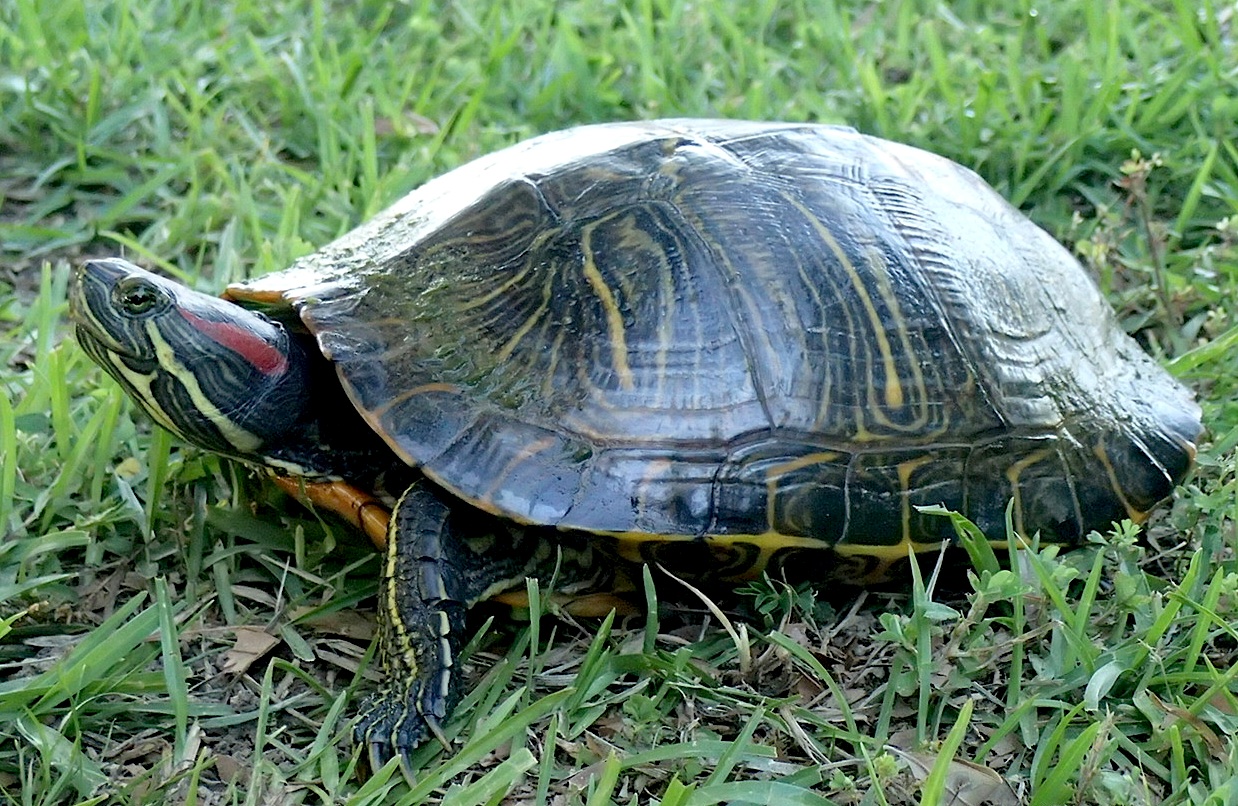
|
Red-eared Slider - Trachemys scripta elegans
An aquatic turtle with an olive-green carapace (shell) with a broad red mark behind its eyes and thin yellow stripes down its neck as well as thin
yellow markings on its shell. Webbed toes with claws on all feet. Maximum length is 11 inches, 279mm. Used extensively in the pet trade. By far the
most abundant freshwater turtle in Louisiana and it can be seen in almost any body of water basking on logs. Often mistakenly called a snapping turtle
but the slider is not even in the same family. Availability is the main factor in diet. Primary foods include aquatic and terrestrial plants, small
crustaceans, and insects. Abundant in the park. |
Family Kinosternidae - Mud and Musk Turtles
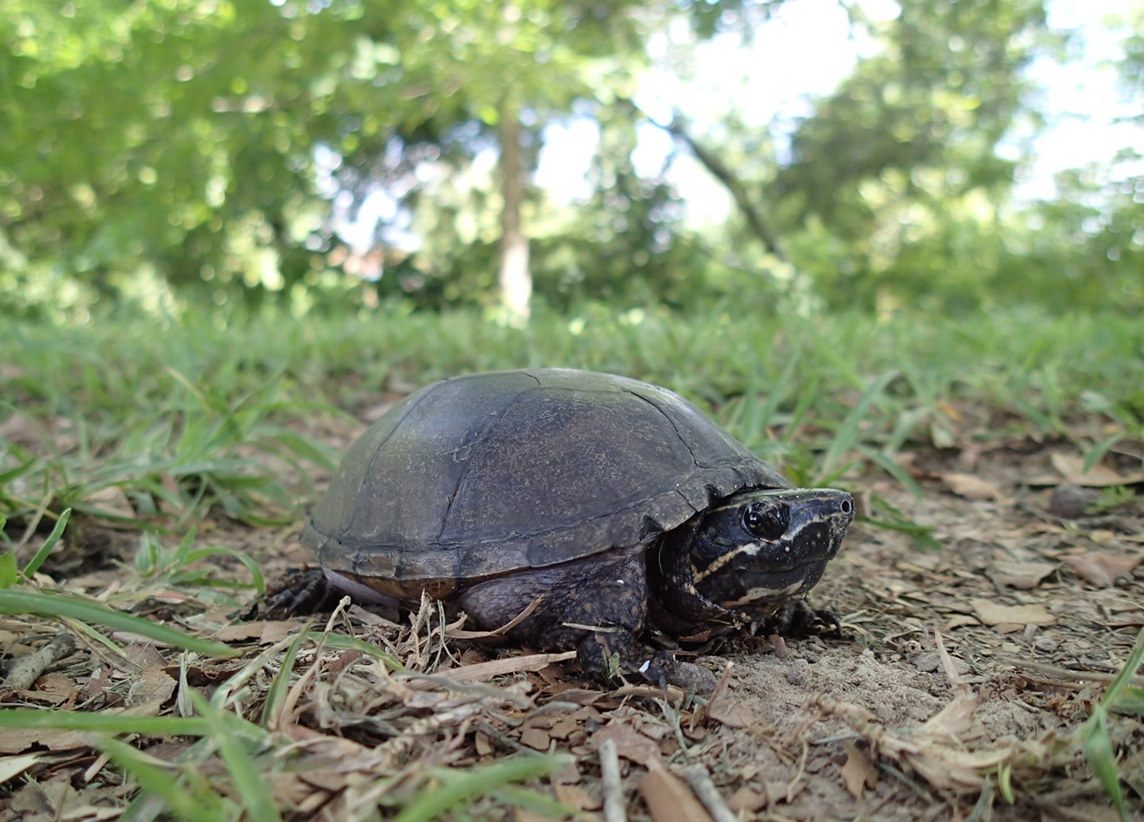
|
Stinkpot - Sternotherus odoratus
An aquatic turtle with an olive-brown high-doomed carapace (shell) and thin, light yellow stripes down neck. Maximum length is 5½ inches, 139mm.
Appropriately called a stinkpot because this turtle will excrete a foul odor when threatened or handled. Rarely basks. An omnivore that searches
the bottom of bodies of water for food. Hatchlings have a brick red plastron (underside of shell), which fades to an olive brown to black color like
the carapace. Abundant in the park. |
Family Trionychidae - Soft-Shelled Turtles
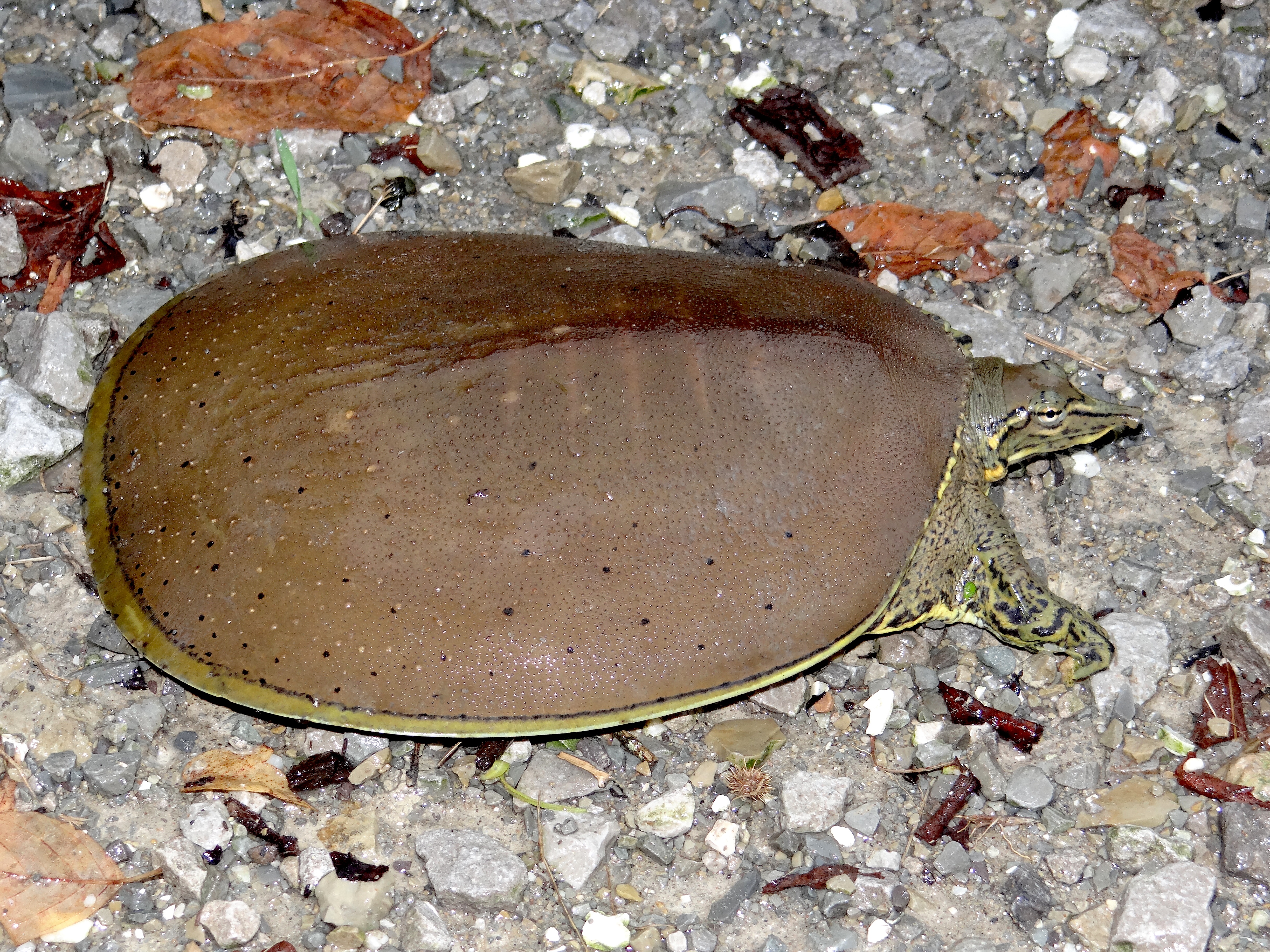
|
Spiny Softshell - Apalone spinifera
A pancake-flat, totally aquatic turtle with a smooth, leathery, olive-brown carapace (shell). Toes are extensively webbed and it has three, long
claws on each foot. Maximum length is 21 1/4 inches, 540mm. They lie on the bottom (usually partially covered by substrate) in shallow water and
stretch their long necks to breathe above the surface. Primary foods include worms, fishes, crawfish, insects, and aquatic plants. Common in the
park. |
All photos courtesy of Brad M. Glorioso.
To see more photos, view our Facebook page.